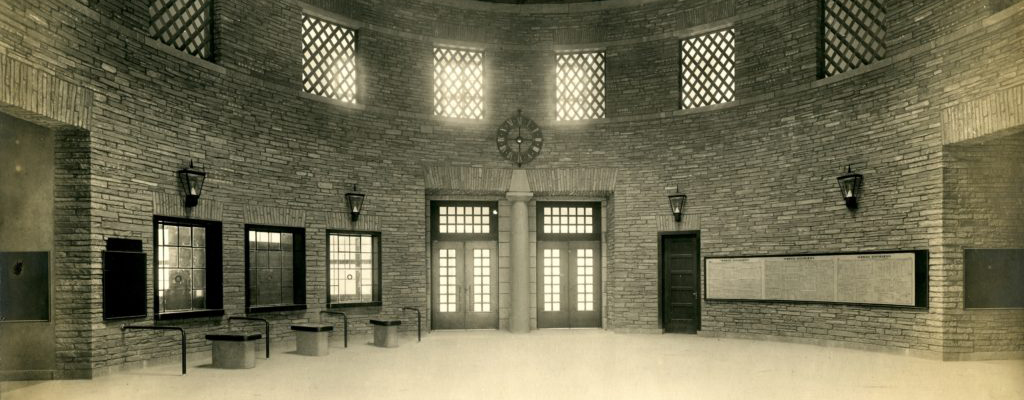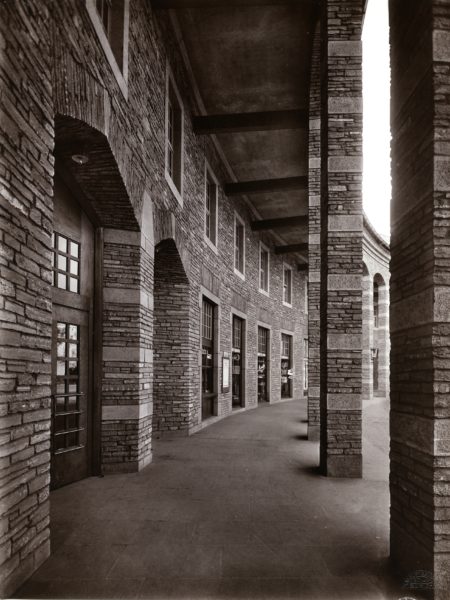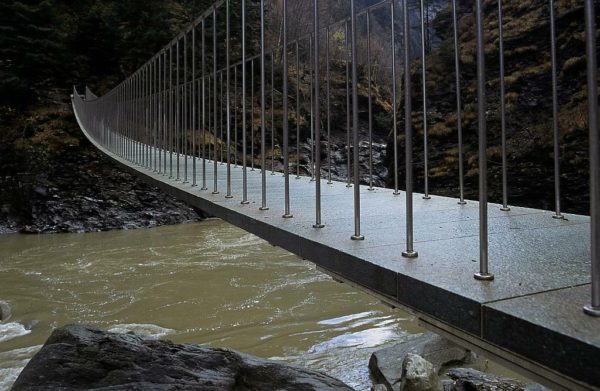Felspar, quartz and mica – the main mineral components that make up granite and another type of rock: gneiss. Even though it was used to construct some of Switzerland’s famous buildings, gneiss is relatively unknown compared to granite or marble.
Besides limestone and sandstone, gneiss is one of the most important natural stones in this country. Of the roughly 70 Swiss quarries still in use gneiss is extracted in nearly half of them. Granite is obtained in only three places and lags way behind the other aforementioned types of stone in terms of the volume quarried.
Unlike granite, which has an even grain, gneiss has a foliation that is more or less pronounced, which is usually visible through lighter or darker layers and renders the stone cleavable.

Micacious gneiss from Friedrich M. Stapff’s Gotthard Tunnel Collection (1880), Earth Science Collections, ETH Zurich, Copyright: E-pics / ETH Zurich (GN_037_01_O)
Gneiss has been used as a building material locally in areas where it is found for centuries (in Switzerland almost throughout the Ticino Alps and parts of the Cantons of Grisons and Valais). The construction of the Gotthard Railway Tunnel marked the beginning of an economic heyday for the stone, which could also be transported north of the Alps once the tunnel was completed in 1883.
Architecturally speaking, this was particularly reflected in Zurich Enge railway station, where the Gotthard line emerged at the time. The building constructed by the Pfister brothers in 1927 is clad in carved and broken blocks of Maggia gneiss. The historical-style building deliberately borrowed from the Ticino tradition was highly controversial at the time as its design was not perceived as contemporary.
Front gate of Enge railway station, Zurich, Pfister brothers, 1927, Copyright: gta Archives/ETH Zurich (79_062_F_4)
Jürg Conzett, however, found a far more contemporary use for gneiss in 1999 when he built the Pùnt da Suransuns in Viamala as a stress ribbon bridge and utilised soft green slabs of Andeer gneiss for the bridge flooring.
Pùnt da Suransuns, Viamala, Jürg Conzett, 1999, Copyright: Conzett Bronzini Partner AG
Anyone who would like to learn more about Swiss gneiss and its various uses in architecture should visit ETH Zurich’s Materials Collection, which hosted the exhibition Gneiss! Swiss stone in an architectural context in the autumn of 2016.


